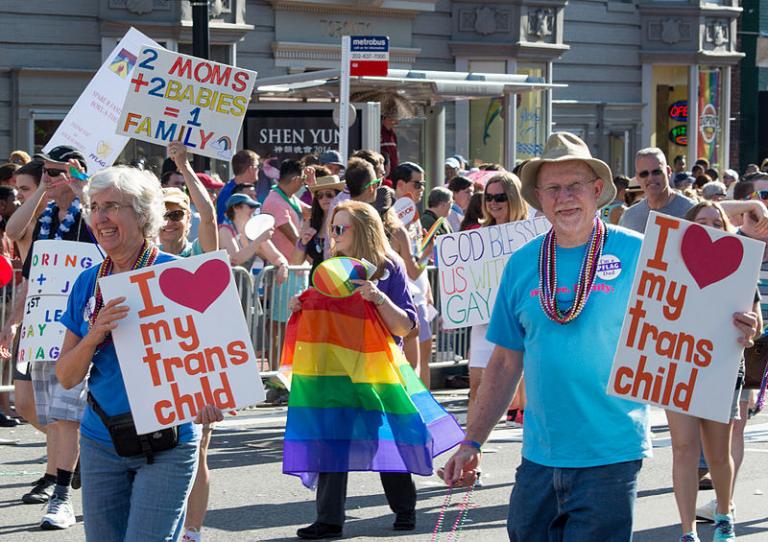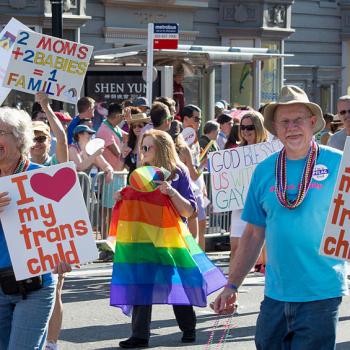
To be “gender expansive”?
To be “gender non-conforming”?
In August 2012, so almost exactly a decade ago, the New York Times published an article about children with these characteristics, “What’s So Bad About a Boy Who Wants to Wear a Dress?”
These boys included Alex, age 6, who “has been fairly clear that he is simply a boy who sometimes likes to dress and play in conventionally feminine ways.” They included the unnamed son of Moriko, who enjoyed dolls and girlish clothes, initially had a therapist who encouraged his parents to push stereotypically boy behavior, but then became a part of a 20-family “support group for families looking to accept, not change, their children’s gender expression.” Now (then) in 8th grade, he dressed like his (girl) friends, black eyeliner and all, but “When his teachers asked which pronoun they should use when referring to him, he said masculine,” and he was offered but rejected puberty blockers. Nick was a 10 year old who played with, and designed clothes for, Barbie dolls. Jose, 9, enjoyed dresses and dolls as a preschooler but at the time of the story preferred Legos — and ballet. James, age 14, had in early elementary school years, worn “feminine clothes” but “By fifth grade, though, he had abandoned most of his skirts.” He had male and female friend groups, and with the latter still enjoyed acting “girly.” And P.J., age 8, wore “girl clothes” but the reporter relays the following conversation:
P. J.’s favorite video game, Glory of Heracles, features an ambiguously gendered character that P.J. described as a girl who wants to be a boy.
“Do you feel like that?” I asked him one day at his house.
“No, I don’t want to be a girl,” he said, as he checked himself out in his bedroom mirror and posed, Cosmo-style. “I just want to wear girl stuff.”
“Why do you want to be a boy and not a girl?” I asked.
He looked at me as if I were daft. “Because I want to be who I am!”
By way of explanation, he told me about a boy in his third-grade class who is a soccer fanatic. “He comes to school every day in a soccer jersey and sweat pants,” P. J. said, “but that doesn’t make him a professional soccer player.”
With the exception of the unnamed eyeliner-wearing boy, there was no suggestion that these kids were anything other than “boys who like stereotypically girl activities and clothing/styles,” and even with respect to Eyeliner Boy, one gets the impression that it is those around him who are more worried about finding a label for him than he is.
Of course, it is an indicator of just how much times have changed, how quickly Gender Ideology has created its definitions, its terminology, and its categories for the people it snares into its web, that in reporting the collective hand-wringing by Eyeliner Boy’s mother and therapist, the label “nonbinary” doesn’t appear.
But a decade later the very idea of “boys who wear dresses” has vanished. These boys have been “transed” — that is, either their desires to wear dresses have been interpreted by those around them as meaning they are transgender, or that these kids have been deemed to be a part of the LGBTQ+ community in other ways (as the “+” or the Q).
For example, in 2012, Human Rights Campaign conducted a survey and released a report, “Supporting and Caring for our Gender Expansive Youth.” Based on a survey of 10,000 teenagers who identified as LGBT (conducted by creating a survey link and soliciting teens to take the survey), this report defines “gender expansive” to mean the roughly 10% of survey respondents who did not check “male” or “female” but said they were either transgender or “other.” Separately, they define “gender-expansive” as
A person with a wider, more flexible range of gender identity and/or expression than typically associated with the binary gender system. Often used as an umbrella term when referring to young people still exploring the possibilities of their gender expression and/or gender identity.
“Gender expression,” they say, is the
External appearance of one’s gender identity, usually expressed through behavior, clothing, body characteristics or voice, and which may or may not conform to socially defined behaviors and characteristics typically associated with being either masculine or feminine.
And “gender non-conforming” means
A broad term referring to people who do not behave in a way that conforms to the traditional expectations of their gender, or whose gender expression does not fit neatly into a category. While many also identify as transgender, not all gender non-conforming people do.
The terms are hard to pin down, and nowhere in the HRC’s glossary do they define basic terms such as “gender” itself or “male” or “female,” but it is simply not possible to reconcile the HRC’s definitions with any belief that a boy who wants to “wear girl stuff” can still be a boy. After all, according to their definitions, one expresses one’s gender identity through one’s behavior, clothing, etc. If you behave in masculine ways, your gender identity is therefore “male.” If you behave in feminine ways, your gender identity is “female.”
Put it all together, then, and children who would have been simply “different” are now being labelled as “trans” or “nonbinary” or some other category which labels them and puts them into a bucket and says, “you are different and you are One of Us,” and it reminds me of the eagerness with which anti-racism activists label an ever growing number of people as “People of Color” (e.g., labelling as “Of Color” the children of mixed race/ethnicity marriages, people of Middle Eastern origin who historically had been labelled “white”), in other words, growing the number of people with the label LGBTQ for the purpose of increasing the size, and power, of the group, and in a sense claiming ownership of these children.
So it’s deeply unfortunate that this path of a decade ago, with children freer to express themselves as they wish, did not play out, and we ended up with the endless numbers of teens proclaiming themselves to be nonbinary, instead.









